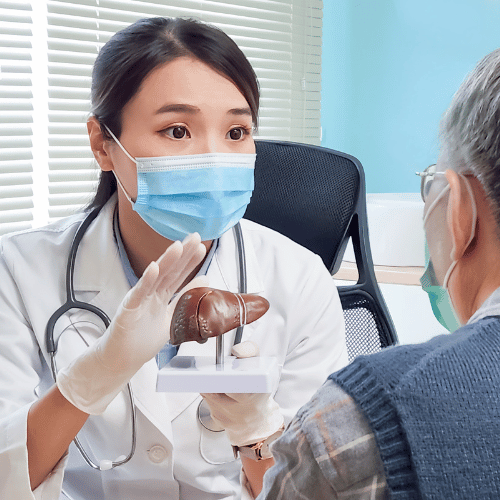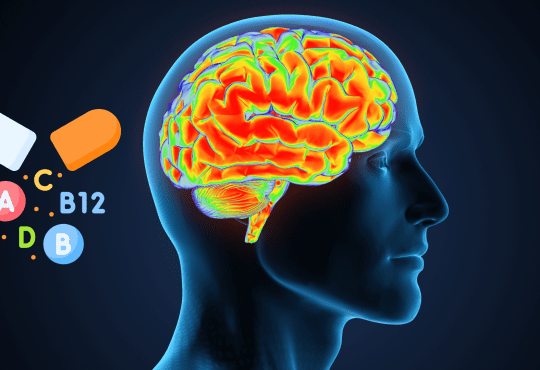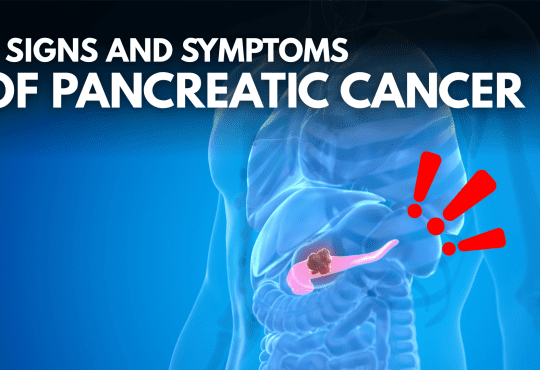
How to Detect Liver Cancer Early
Today, we’re tackling a topic of utmost importance: How to Detect Liver Cancer Early.
Early detection of liver cancer can significantly improve treatment outcomes, and that’s precisely what we’ll focus on today.
Now, let’s embark on this vital journey to understanding early liver cancer detection.
7. Understanding Liver Cancer
At number 7, let’s begin with understanding what liver cancer is.
This is a medical condition where cancer cells start to grow in the tissues of your liver, which is one of the body’s largest and most vital organs.
It’s essential to know about liver cancer because recognizing its risk factors and symptoms can pave the way for early detection.
There are various factors that can contribute to the development of liver cancer.
Chronic hepatitis, particularly hepatitis B and C, is one of the major risk factors.
Another significant contributor is cirrhosis, a condition where the liver is scarred, usually as a result of long-term damage.
This damage can be due to a variety of causes, including heavy alcohol use, chronic viral hepatitis, or certain genetic conditions.
Understanding liver cancer involves recognizing its potential causes and the importance of monitoring for signs or symptoms, especially if you have risk factors for the disease.
Early detection of liver cancer can greatly improve the effectiveness of treatment, which is why it’s so crucial to be informed about this condition.
6. Recognizing Symptoms
Moving on to number 6, we’re going to discuss how to recognize the symptoms of liver cancer.
This step is crucial because early detection can greatly influence the effectiveness of treatment.
There are several signs to watch out for, but keep in mind, these symptoms can be subtle and might be mistaken for less serious health issues.
One common symptom is unexplained weight loss, where you might find yourself losing weight without any changes to your diet or exercise routine.
Another key indicator is abdominal pain, particularly in the upper right area of your abdomen or near the right shoulder blade.
This pain can vary from mild to severe.
Jaundice is also a significant sign to be aware of.
It involves yellowing of the skin and eyes, which occurs when the liver is unable to process bilirubin, a yellow pigment formed by the breakdown of dead red blood cells in the liver.
It’s important to remember that while these symptoms can be associated with liver cancer, they can also be related to other health conditions.
However, this doesn’t mean they should be ignored.
If you notice any of these signs, especially if they persist, it’s essential to consult with a healthcare professional for a proper diagnosis.
5. Knowing the Risk Factors
At number 5, we delve into understanding the risk factors for liver cancer.
Knowing whether you’re at higher risk can help you be more vigilant about your liver health.
There are several key factors to consider, some of which might be within your control, while others might be related to pre-existing health conditions.
Firstly, chronic hepatitis B and C are significant risk factors for liver cancer.
These viral infections can lead to long-term liver damage and increase the likelihood of developing liver cancer.
It’s important to get regular check-ups if you have a history of either of these conditions.
Another factor to consider is a personal or family history of liver disease.
If you’ve had liver problems in the past or if liver disease runs in your family, you might be more prone to developing liver cancer.
Lifestyle factors also play a crucial role. High alcohol consumption can lead to liver damage over time, increasing your risk.
Similarly, obesity is another critical factor. It can lead to fatty liver disease and, consequently, heighten your risk for liver cancer.
Being aware of these risk factors is vital.
If any of these apply to you, it’s important to have regular discussions with your healthcare provider about your liver health and any preventive measures you can take.
Remember, being informed about your risk factors is the first step in taking proactive measures to protect your liver.
4. Regular Health Check-Ups
Number 4 on our list emphasizes the critical role of regular health check-ups.
Staying on top of your liver health often comes down to these routine visits to your healthcare provider.
It’s during these check-ups that any early changes or potential issues with your liver can be detected, often before they become serious.
Regular doctor’s appointments are especially important if you have known risk factors for liver disease.
These check-ups typically involve blood tests that can assess liver function and look for markers that could indicate liver stress or damage.
They may also include imaging tests like ultrasounds or CT scans, which can help visualize the liver and spot any abnormalities.
It’s easy to brush off these appointments, especially if you’re feeling well, but remember that many liver conditions don’t show symptoms until they’re quite advanced.
This is why these check-ups are so crucial – they’re your first line of defense in catching any issues early when they’re typically more manageable and treatable.
So, make sure to keep those doctor’s appointments and discuss any concerns you might have about your liver health.
Prevention and early detection are key to maintaining good health and managing potential liver issues effectively.
3. Liver Function Tests
Coming in at number 3, let’s talk about liver function tests.
These are crucial tools in monitoring and maintaining liver health.
Liver function tests are simple blood tests, but they provide vital information about the state of your liver.
They can detect abnormalities in how your liver is working, sometimes even before you start feeling any symptoms.
These tests measure the levels of various enzymes and proteins in your blood that are associated with liver function. This includes things like alanine aminotransferase (ALT) and aspartate aminotransferase (AST), which can be indicators of liver damage or inflammation.
They also look at bilirubin levels, which can signify liver or bile duct problems, and albumin, a protein made by the liver that can give an insight into its synthetic function.
An abnormal result doesn’t necessarily mean you have a serious liver condition.
It could be a temporary issue or something minor, but it’s crucial to investigate further with your healthcare provider to understand the cause and take any necessary action.
Regular liver function tests can be particularly important if you’re at a higher risk for liver problems, such as those with a history of liver disease, heavy alcohol use, or certain medical conditions that affect the liver.
2. Imaging Tests
At number 2, we’re focusing on imaging tests, a key element in liver health monitoring and early detection of liver issues.
Techniques like ultrasounds, CT (computed tomography) scans, and MRI (magnetic resonance imaging) scans are invaluable tools for getting a clear picture of the state of your liver.
Ultrasounds use sound waves to create images of the liver, helping to reveal any abnormalities or changes in the organ’s structure.
It’s a quick, painless procedure and is often the first imaging test used if liver issues are suspected.
CT scans provide a more detailed view, using X-rays to create cross-sectional images of the liver.
This can be especially useful in spotting liver tumors or assessing the extent of liver damage.
MRI scans use magnetic fields and radio waves to produce detailed images.
They are particularly good at differentiating between different types of tissues, making them useful in diagnosing specific liver conditions and abnormalities.
These imaging tests are non-invasive and can be crucial in the early detection of liver problems.
They can spot changes or issues that might not yet be causing symptoms, which can be key in addressing problems early on, when they’re most treatable.
Remember, if you’re at risk for liver disease or if your doctor recommends it based on your liver function tests or symptoms, undergoing these imaging tests can be a vital step in maintaining your liver health.
1. Biopsy and Advanced Diagnostic Procedures
Number 1, and perhaps the most definitive step in diagnosing liver issues, especially liver cancer, is a biopsy or other advanced diagnostic procedures.
If tests such as blood work or imaging suggest the possibility of liver cancer, a biopsy is often the next step to confirm the diagnosis.
During a liver biopsy, a small sample of liver tissue is collected using a needle.
This procedure is typically done under local anesthesia to minimize discomfort.
The collected tissue sample is then examined under a microscope by a pathologist, who can identify the presence of cancer cells and provide information about the type and stage of the cancer.
A biopsy is crucial because it gives the most accurate information about what’s happening in the liver.
While imaging tests and blood work can indicate potential issues, a biopsy allows for a closer and more precise examination.
This information is vital for planning the most effective course of treatment.
In some cases, other advanced diagnostic procedures may also be used, depending on the situation.
These can include laparoscopy, where a small camera is inserted into the abdomen to get a direct look at the liver, or more specialized scans.
Understanding that a biopsy or advanced diagnostic procedures can be a key step in liver cancer diagnosis is important.
It’s a procedure that can provide clarity and direction in what can often be a complex and stressful situation.
Early detection of liver cancer is key to managing it effectively.
Be aware of the signs, understand your risk factors, and don’t neglect your regular health screenings.
If you have any concerns or fall under high-risk categories, consult with your healthcare provider.
Your comments and questions are always welcome, so don’t hesitate to engage in the comment section below.









